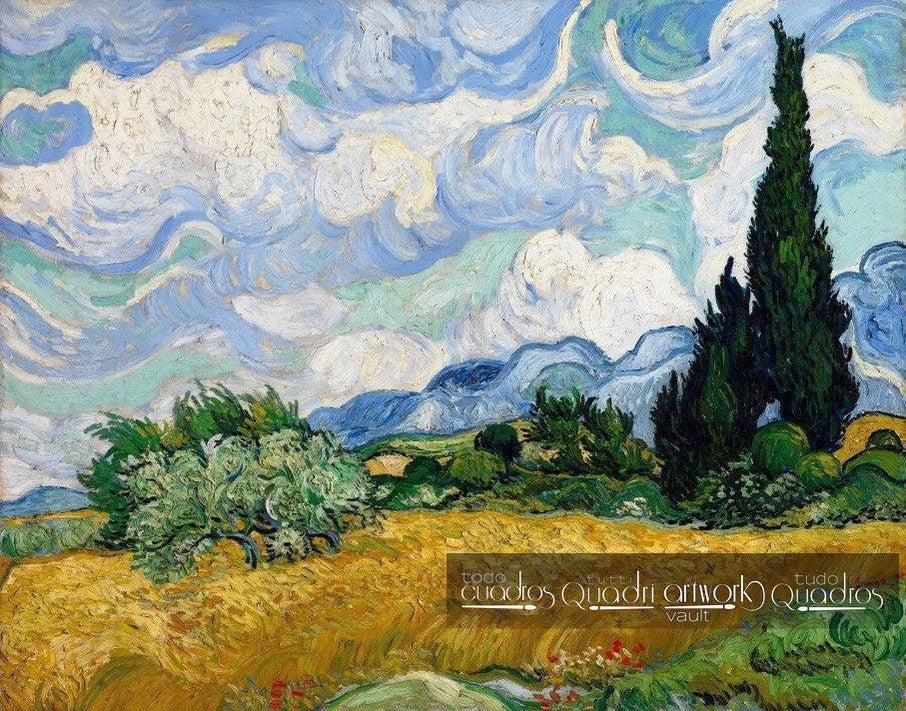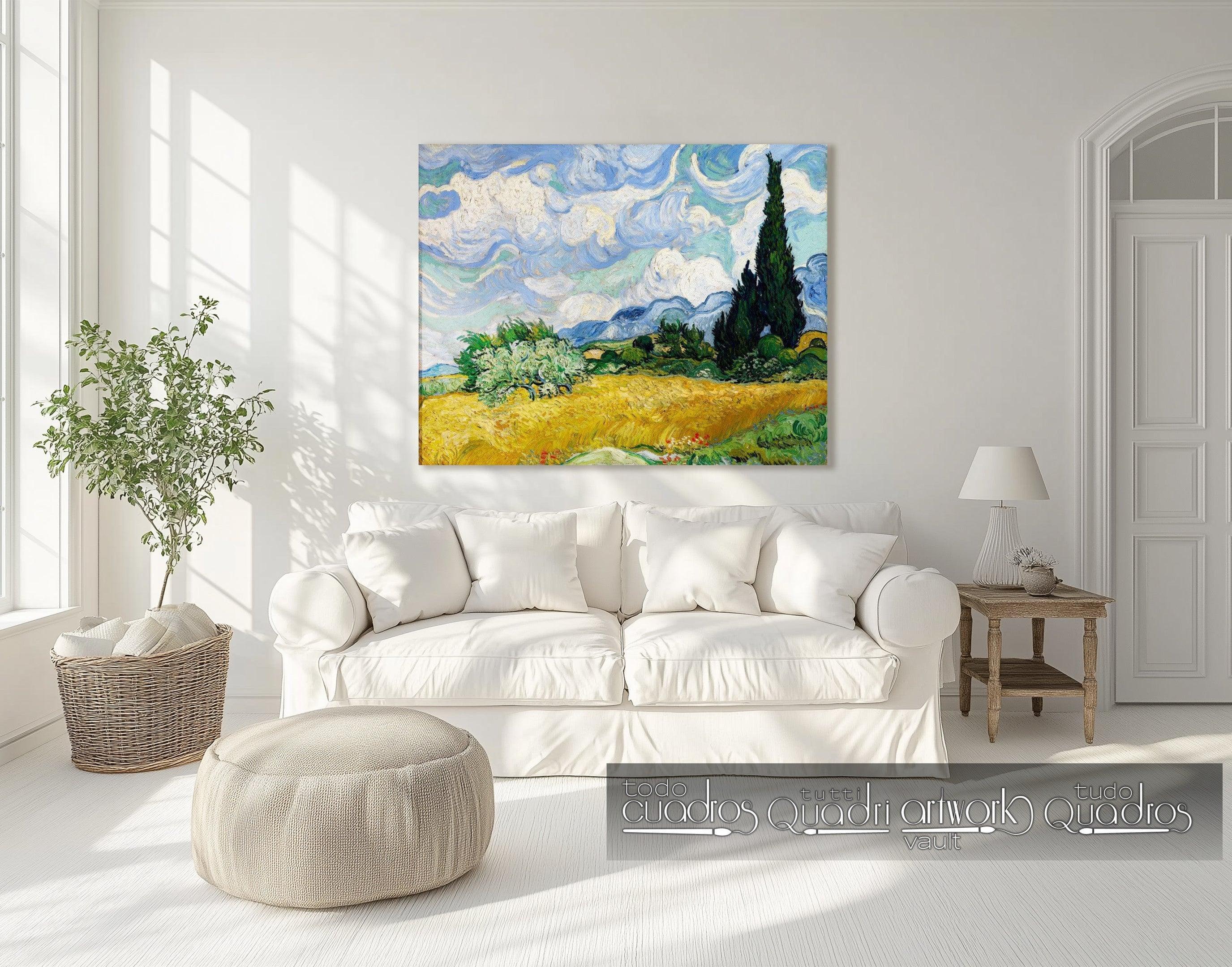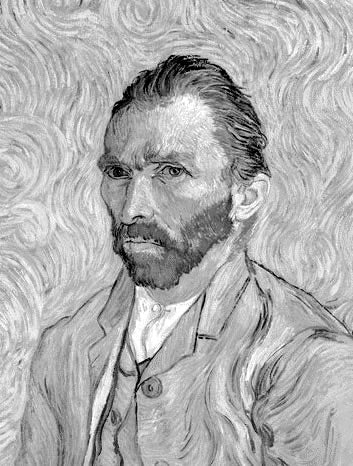


Wheat Field with Cypresses, Van Gogh
- Oil on linen canvas
- 100% hand-painted
- Reproduction painting
- Available to purchase online
- See quality
- Delivery to the UK
- Money-back guarantee
- Customer reviews
| Author: | Vincent van Gogh |
|---|---|
| Original Title: | Champ de blé avec cyprès |
| Type: | Painting |
| Style: | Post-Impressionism |
| Medium | Oil |
| Support: | Canvas |
| Year: | 1889 |
| Located: | Museum MET, New York. |
The MET version stands out for its greater color intensity and freer brushwork, where the texture of the oil paint takes center stage. This work summarizes the balance between the observation of the real landscape and Van Gogh’s emotional interpretation.
In this painting, the artist depicts a Provençal landscape dominated by cypresses, golden wheat, and a dynamic sky in shades of blue and white. The short, directional brushstrokes add movement and depth, reflecting the expressive style that characterized his final artistic period.
One of the most recognized works by Vincent van Gogh, painted in 1889 during his stay in Saint-Rémy-de-Provence. There are three versions of this composition; the one shown on this page corresponds to the version housed at the Metropolitan Museum of Art (MET) in New York.
Choose options





